Our Blog - Southern Italy - Martina Franca
Archaeological excavations put the origins of Martina Franca to prior to the 4th century. Originally made up of two towns, San Martino and Franca that were combined in 1310 to make Franca Martina. Over the centuries, the "Franca" part disappeared and remained just Martina up until 1861 when it was renamed Martina Franca. Also prior to 1861, Martina Franca was a fully walled town with 24 towers and four gates. The old town is well preserved and surrounded by stone walls with Baroque gates. It has narrow, winding streets that lead to piazzas, like the Piazza Roma which faces the 17th century Palazzo Ducale.
Agriculture is concentrated in the fertile lands in small valleys. They have a white DOC wine from Martina Franca, and most of the wine is this DOC is white. There are also lots of olive trees and olive oil is one of the main products of the area.
There is (as you can imagine based on the other cities and towns) a historical center that used to be a walled city. Our B&B was just outside of one of the gates, Porta di Santo Stefano. It is the entrance to the baroque part of the city and was built in 1764. It honors the patron saint of the city, San Martino (Saint Martin), who is shown at the very top.



As you come inside the gate, just to the right is the huge Ducal Palace. It was built in 1668 on the site of a previous castle from 1388. We had the option of going through the rooms but we decided not to.



Across from the palace is the Martucci Palace, which is a good example of 18th-century architecture used for stately mansions. You can see a difference between the right half (which looks clean) and the left half (which doesn't). It actually is owned by 2 different families and one of them did some restoration work in 2010.

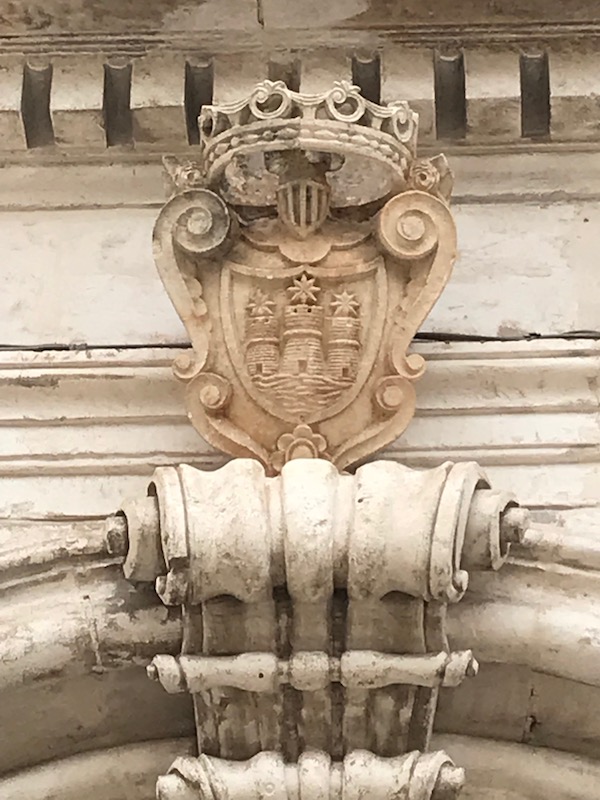
The Basilica of San Martino dates back to the 2nd half of the 18th century. The facade is decorated with a high-relief group showing Saint Martin cutting his cloak to give to a beggar.


An overall view of the interior. The main altar is placed within a small dome and was built in 1773 of polychrome marble. You can see that there is a stained glass window at the top (which I also have a close-up of) showing the story of Saint Martin and the cloak. The last picture tries to give you an idea of the carved decorations on the wall.




The baptistery was built in 1773 by Crescenzo Trinchese. The baptismal font is an octagonal shaped column decorated with floral motifs and a sculptural group at the top showing the baptism of Christ.

One of the side chapels, the Capella of the Nativity of Jesus, is dedicated to the Nativity. The Nativity is shown both with the painting above the alter and the 5 statues sitting on the altar itself.

Church and Convent of San Domenico has a large and rich Baroque façade although it is difficult to see all of it as it was tucked away in the narrow streets. The church was built in 1746 over a pre-existing Romanesque church. The interior was similar to some of the other Baroque churches and features quite a few side altars of polychrome marble.


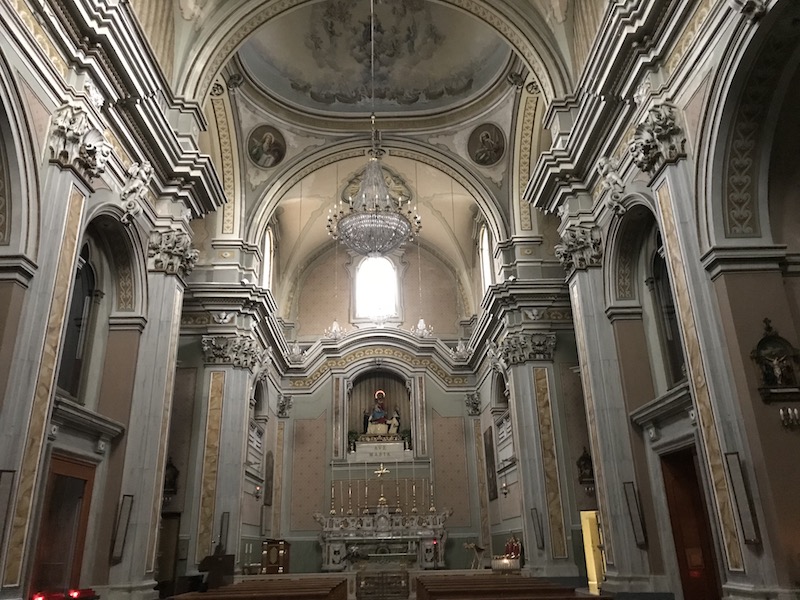
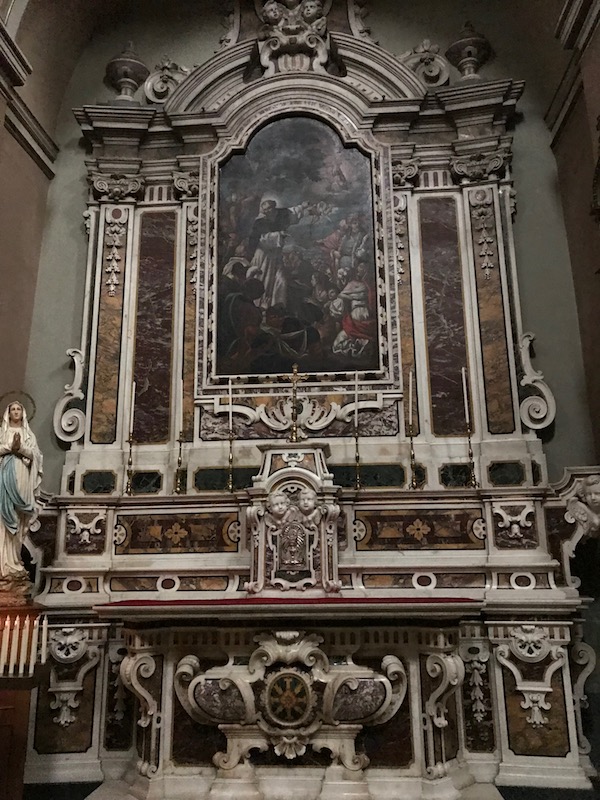


Next door is a cloister with some nice frescoes that are still mostly visible.



This church is quite unique as it is not an 18th century Baroque church. The Chiesa di San Vito dei Greci is one of the largest chapels dating from around the end of the 13th century. The stone facade is very plain without any real decorative elements, and is topped with a 3-arch bell tower from the 15th century. It wasn't open so we didn't get to see the interior.

This is the Ancona Palace, which was built in the 18th century and is unique for the two caryatids that hold up the balcony.

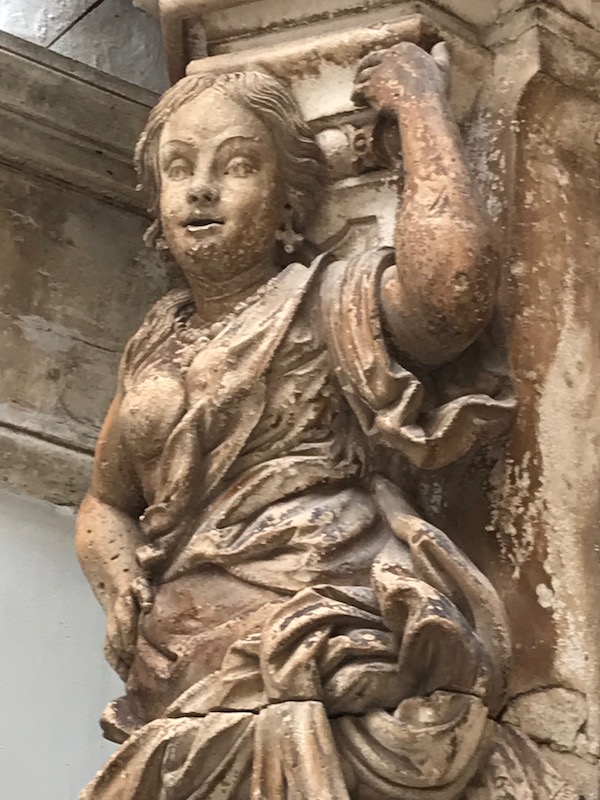

There are several round towers on the perimeter of the ancient wall, one of them which seems to have been turned into a house.



The Church del Carmine was built between 1727 and 1758 and is actually outside of the city walls and like most of the 18th century buildings, is in Baroque style. The facade has several niches with statues and a medallion above the main door. The interior is in a Latin cross layout but it has no side aisles. The stucco decorations are from the 19th century.




This small street seemed to have an abundance of stately mansions with nice wrought-iron balconies. There are 3 of them, all with slightly different decor on the main floor (some with windows, some without, round doors, square doors ... )

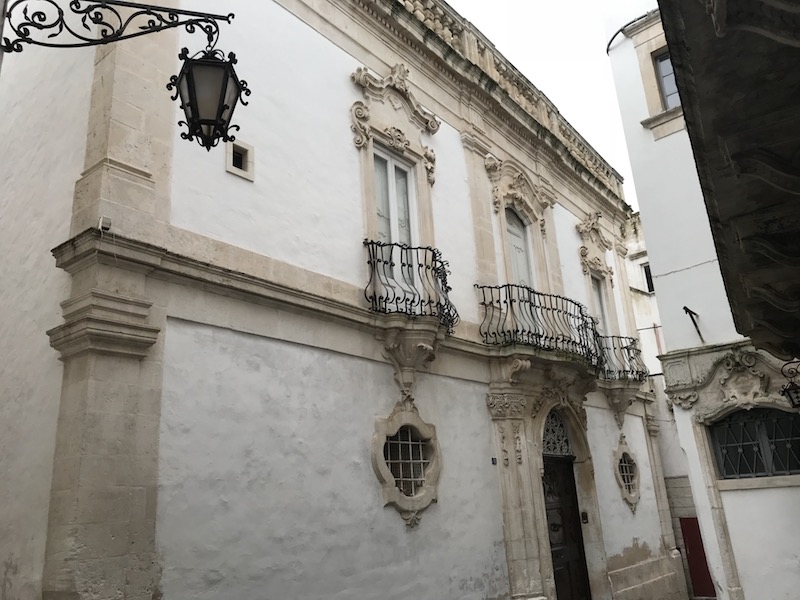

This semi-circular portico was designed in 1854 and represents the union between the Baroque churches and private buildings on Cavour Street. It used to be an open market and now has a cafe/restaurant on one side.

You'll see that this mansion "sticks out" ... the rest of the historical center is mostly white or beige, and this one is bright red with green details. This is the 18th century Recupero Palace and is known for the color of the facade.
